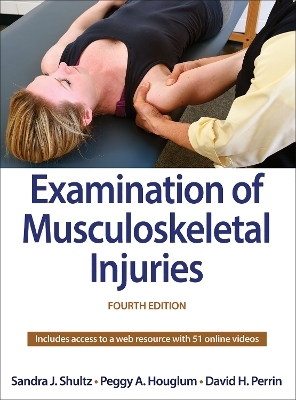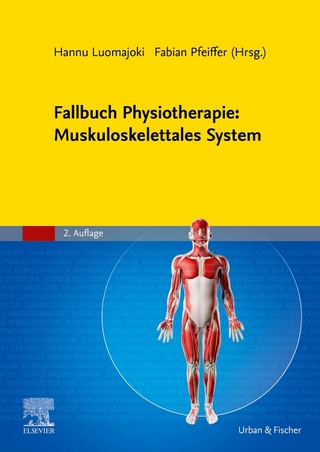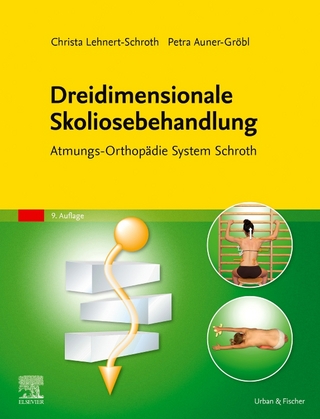
Examination of Musculoskeletal Injuries
Human Kinetics (Verlag)
978-1-4504-7292-0 (ISBN)
This updated fourth edition contains foundational information on a wide spectrum of injuries and the appropriate tests for examining and diagnosing them. Readers will learn to obtain an accurate injury history from the patient, inspect the injury and related areas, test motion control, palpate both bone and soft tissues, and examine function in order to gauge the player’s readiness to return to play. The fourth edition also includes the following enhancements:
• A new online video library contains more than 51 short video clips that correspond to and demonstrate evaluation techniques for various musculoskeletal disorders found throughout the text.
• Full-color photos and medical artwork have been added throughout the text to clarify testing techniques and enhance knowledge of relevant body structures.
• Substantial updates provide the most recent evidence-based clinical information.
• An expanded selection of special tests and injury-specific examinations are now presented in a more accessible format and include a photo or video, description of the purpose, patient and clinician positions for the test, procedures performed, and possible outcomes.
The content of Examination of Musculoskeletal Injuries, Fourth Edition With Web Resource, has been restructured and focused to provide applicable information in a straightforward manner. Part I is aimed at entry-level students and presents general and introductory skills for each component of injury examination, including basic terminology and a breakdown of the examination procedure. Each component is then explored in depth along with general purposes and techniques. Part I ends by incorporating the various components into a systematic strategy for examination based on severity of injury and environment. Part II then applies the principles learned in the previous chapters to the recognition and examination of injuries organized by specific regions of the body. Each chapter includes strategies for examination immediately after an injury as well as examinations seen later in a clinical setting.
To assist student comprehension and knowledge retention, key terms are in boldface throughout the text and are defined in the glossary. Symbols throughout the text alert students to essential procedures and highlight important information. The web resource houses printable tables of special tests, examination checklists and forms that students can use in laboratory work and review sessions, and a robust video library. To aid instructors, the text includes a suite of ancillary materials featuring a test package, instructor guide, and presentation package plus image bank.
Examination of Musculoskeletal Injuries, Fourth Edition With Web Resource, is an essential resource ffor students of athletic training and therapy as well as current practitioners in the field who wish to use evidence-based procedures in their clinical practice to ensure safe and accurate diagnoses of injuries.
Sandra J. Shultz, PhD, ATC, CSCS, is professor and chair in the department of kinesiology at the University of North Carolina at Greensboro. As a certified athletic trainer since 1984, Shultz has a broad clinical perspective having worked with athletes at the high school, collegiate, Olympic, and international levels. Before coming to the University of North Carolina at Greensboro, Shultz taught and conducted clinical research in the sports medicine and athletic training program at the University of Virginia. She also served as associate director of athletic training and rehabilitative services at the University of California at Los Angeles, where two of her primary responsibilities were the direct health care of student-athletes and the education of athletic training students. Shultz is a member of the National Athletic Trainers’ Association (NATA), the American College of Sports Medicine (ACSM), the National Strength and Conditioning Association (NSCA), and the Orthopaedic Research Society (ORS). She is a section editor for the Journal of Athletic Training. Previously she served on the NATA’s Entry-Level Education Committee, Pronouncements Committee, Convention Educational Program Committee, Appropriate Medical Coverage for Intercollegiate Athletics Task Force, and Research and Education Foundation Research Committee. She was also a site visitor for the Joint Review Committee on Educational Programs in Athletic Training (JRC-AT). As a researcher, Shultz focuses on the study of risk factors for anterior cruciate ligament injury in female athletes and has received grant funding from the National Federation of State High School Associations (NFHS), the NATA Research and Education Foundation, the National Football League Medical Charities, and the National Institutes of Health. She is the primary author of the NFHS Sports Medicine Handbook and the NATA Appropriate Medical Care for Intercollegiate Athletics. Her awards from the NATA and NATA Foundation include the Freddie H. Fu, MD, New Investigator Award, the Most Distinguished Athletic Trainer Award, the Sayer “Bud” Miller Distinguished Educator Award, and the Medal for Distinguished Athletic Training Research.She was inducted into the NATA Hall of Fame. Shultz is a fellow of the NATA, the American College of Sports Medicine, and the National Academy of Kinesiology. Shultz enjoys running, reading, and traveling. She resides in Greensboro, North Carolina. Peggy A. Houglum, PhD, is retired as an associate professor at the Rangos School of Health Sciences at Duquesne University in Pittsburgh. She has nearly 45 years of experience providing patient and athlete care in a variety of settings, including athletic training facilities, sports medicine clinics, rehabilitation hospitals, acute care hospitals, burn care facilities, workers’ compensation clinics, and extended care facilities. She has also been an athletic trainer with the United States Olympic Sports Festivals, Olympic Games, and World University Games. Houglum’s extensive background as a certified athletic trainer, physical therapist, clinical and classroom educator, and program director gives her a unique perspective on the appropriate use of therapeutic exercise techniques in rehabilitation programs for treatment of athletic injuries. In 1991, Houglum created the NATA’s first formal continuing educatiion programming. Since that time Houglum has been chair of the NATA Continuing Education Committee and a member of the organization’s Education Council and the Council on Employment. She is a member of the NATA Hall of Fame and has received numerous awards, including the NATA’s Most Distinguished Athletic Trainer, NATA Continuing Education Award, NATA Board of Directors Recognition for Outstanding Contributions, and Therapy Times Most Influential Rehabilitation Professional in Physical Therapy. Houglum is a member of the American Physical Therapy Association’s Sports Medicine Section. She is also a member of NATA and serves on the NATA Board of Certification Role Delineation #7 Committee. Houglum is associate editor for Sports Rehabilitation and serves on the editorial board of Physical Therapy and Rehabilitation. Her professional writing career has focused on presenting complex concepts of health care to students at a level of understanding and appreciation that provides them with the conceptual and clinical core they need to become well-informed clinical professionals. She is author of Therapeutic Exercise for Musculoskeletal Injuries, lead author of Brunnstrom’s Clinical Kinesiology, Sixth Edition, and book chapters on sports medicine and rehabilitation. Houglum enjoys spending time with family, reading, exercising, and painting. She resides in Cedar Grove, Wisconsin. David H. Perrin, PhD, ATC, is dean and professor of exercise and sport science in the College of Health at the University of Utah. For 13 years Perrin was a member of the NATA Professional Education Committee, helping to write the guidelines for accreditation of both undergraduate and graduate athletic training education programs. For 15 years he directed the graduate programs in athletic training and sports medicine in the Curry School of Education at the University of Virginia. He was editor in chief of the Journal of Athletic Training from 1996 to 2004 and was the founding editor of the Journal of Sport Rehabilitation. He is author of Isokinetic Exercise and Assessment and Athletic Taping and Bracing, editor of the third edition of The Injured Athlete, and coauthor of Research Methods in Athletic Training. Perrin’s research interests include injury risk factors of the anterior cruciate ligament in female athletes. His awards from the National Athletic Trainers’ Association include the Sayers “Bud” Miller Distinguished Educator Award, the Most Distinguished Athletic Trainer Award, and the William G. Clancy, Jr., MD, Medal for Distinguished Athletic Training Research. He was inducted into the NATA Hall of Fame. Perrin is a fellow of the National Athletic Trainers’ Association, American College of Sports Medicine, and National Academy of Kinesiology. Perrin enjoys traveling, exercising, and vacationing at his lake cottage in Vermont.
Part I. Principles of Examination
Chapter 1. Anatomical Nomenclature and Injury Classifications
Anatomical Reference Terminology
Physical Maturity Classifications
Injury Classifications
Sign Versus Symptom
Acute Versus Chronic
Closed (Unexposed) Wounds
Closed Soft Tissue Injuries
Bone and Joint Articulations
Nerve Injuries
Open (Exposed) Wounds
Summary
Learning Aids
Chapter 2. Principles of Examination: An Overview
Proper Use of Terminology
Examination Components
Injury Survey
SINS
Subjective and Objective Segments
Testing During the Objective Segment
Determining an Appropriate Course of Action
Documenting the Examination
Standard Abbreviations
SOAP Notes
Summary
Learning Aids
Chapter 3. Taking a History
Information to Seek
Information Categories
Signs and Symptoms
Situation-Specific History and Depth of Inquiry
Essential History (Emergent Examination)
Focused History (On-Site Examination)
Detailed History
Summary
Learning Aids
Chapter 4. Observation
System of Observational Examination
Global Observation
Specific Observation
Details of Specific Observation
Examination of Posture
Examination of Gait
Specific Observation of the Injury
Summary
Learning Aids
Chapter 5. Palpation
General Principles
Foundational Skills
Palpation Technique
Structures to Palpate
Skin
Fascia
Myotendinous Unit
Bone
Joint Structures
Neurovascular Tissue
Lymph Nodes
Palpation Strategies
Summary
Learning Aids
Chapter 6. Examination of Joint Motion
Goals and Purposes
Normal Range of Motion
Prerequisites for Successful ROM Examination
Physiological Motion
Accessory Motion
Examination of Physiological Range of Motion
Positioning
Patient Stabilization and Substitution
Measurement Technique
Examination of Accessory Motion
Joint Accessory Movement Rules
Joint Accessory Examination Technique
Recording Results
Examination of Ligament and Capsular Integrity
Indications for Ligament Stress Tests
Grading of Ligament Laxity
Stress Test Technique
Summary
Learning Aids
Chapter 7. Examination of Strength
Muscle Contraction
Functional Neuromuscular Anatomy
Review of Excitation–Contraction Coupling
Goals and Purposes
Manual Strength Examination
Break Tests
Manual Muscle Testing
Instrumented Strength Examination
Isometric Strength Examination
Isotonic Strength Examination
Isokinetic Strength Examination
Summary
Learning Aids
Chapter 8. Examination of Neurological Status
Functional Neuroanatomy
General Principles of the Neurological Exam
Goal and Purpose
Sensory Function Testing
Motor Function Testing
Reflex Testing
Region-Specific Neurological Examination
Cervical Plexus
Brachial Plexus
Lumbar and Sacral Plexuses
Summary
Learning Aids
Chapter 9. Examination of Cardiorespiratory Status
Functional Anatomy and Physiology
Lungs
Heart
Peripheral Circulation
Examination of Cardiorespiratory Status
Systemic Perfusion (Vital Signs)
Peripheral Circulation
Cardiovascular Compromise
Causes and Types of Cardiovascular Collapse (Shock)
Recognition of Shock
External Bleeding
Summary
Learning Aids
Chapter 10. Putting It All Together: General Examination Strategies
On-Site Examination
Goals and Purposes
On-Site Examination of the Unconscious Athlete
On-Site Examination of the Conscious Athlete
Communicating On-Site Examination Results
Acute Examination
Subjective Segment
Objective Segment
Clinical Examination
General Principles of the Clinical Examination
Subjective Segment
Objective Segment
Summary
Learning Aids
Part II. Region-Specific Examination Strategies
Chapter 11. Cervical and Upper Thoracic Spine
Functional Anatomy
Regional Examination
Injury Recognition and Special Tests
Injury Examination Strategies
Summary
Learning Aids
Chapter 12. Shoulder and Arm
Functional Anatomy
Regional Examination
Injury Recognition and Special Tests
Injury Examination Strategies
Summary
Learning Aids
Chapter 13. Elbow and Forearm
Functional Anatomy
Regional Examination
Injury Recognition and Special Tests
Injury Examination Strategies
Summary
Learning Aids
Chapter 14. Wrist and Hand
Functional Anatomy
Regional Examination
Injury Recognition and Special Tests
Injury Examination Strategies
Summary
Learning Aids
Chapter 15. Lower Thoracic and Lumbar Spine
Functional Anatomy
Regional Examination
Injury Recognition and Special Tests
Injury Examination Strategies
Summary
Learning Aids
Chapter 16. Leg, Ankle, and Foot
Functional Anatomy
Regional Examination
Injury Recognition and Special Tests
Injury Examination Strategies
Summary
Learning Aids
Chapter 17. Knee and Thigh
Functional Anatomy
Regional Examination
Injury Recognition and Special Tests
Injury Examination Strategies
Summary
Learning Aids
Chapter 18. Hip, Pelvis, and Groin
Functional Anatomy
Regional Examination
Injury Recognition and Special Tests
Injury Examination Strategies
Summary
Learning Aids
Chapter 19. Head and Face
Functional Anatomy
Regional Examination
Injury Recognition and Special Tests
Injury Examination Strategies
Summary
Learning Aids
Chapter 20. Thorax and Abdomen
Functional Anatomy
Thoracic Cavity
Abdominal Cavity
Regional Examination
Injury Examination Strategies
Summary
Learning Aids
| Verlagsort | Champaign, IL |
|---|---|
| Sprache | englisch |
| Maße | 216 x 279 mm |
| Gewicht | 2200 g |
| Themenwelt | Sachbuch/Ratgeber ► Sport |
| Medizin / Pharmazie ► Medizinische Fachgebiete ► Orthopädie | |
| Medizin / Pharmazie ► Medizinische Fachgebiete ► Sportmedizin | |
| Medizin / Pharmazie ► Physiotherapie / Ergotherapie ► Rehabilitation | |
| ISBN-10 | 1-4504-7292-3 / 1450472923 |
| ISBN-13 | 978-1-4504-7292-0 / 9781450472920 |
| Zustand | Neuware |
| Haben Sie eine Frage zum Produkt? |
aus dem Bereich


